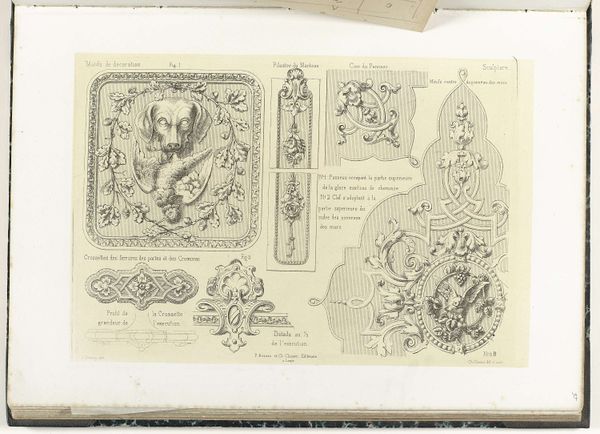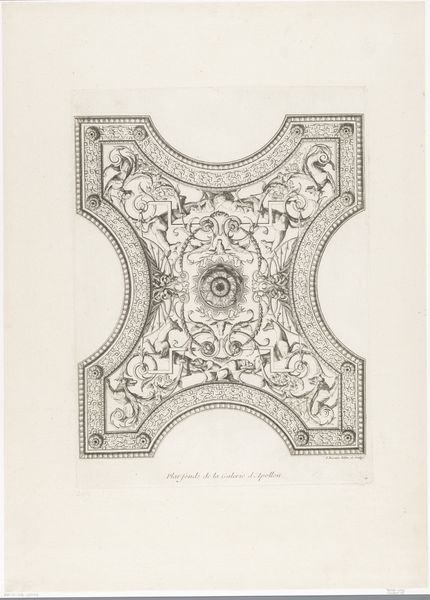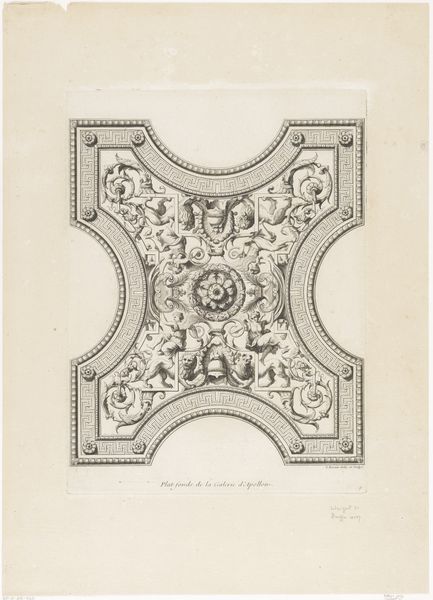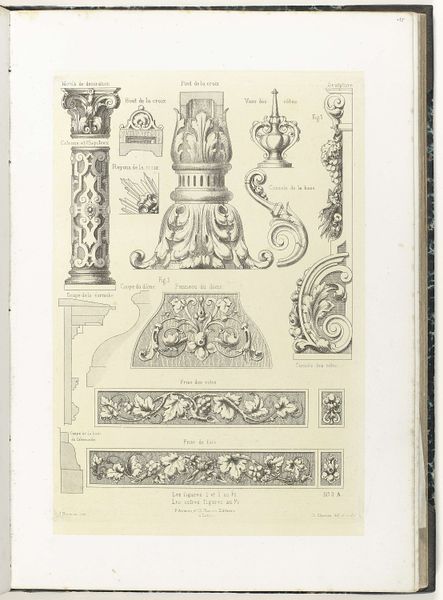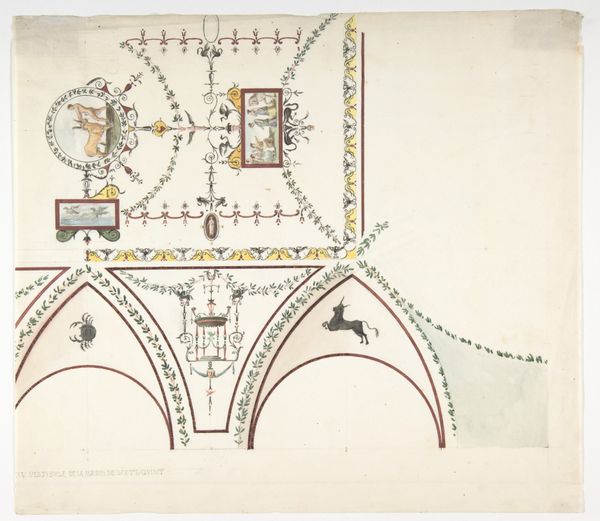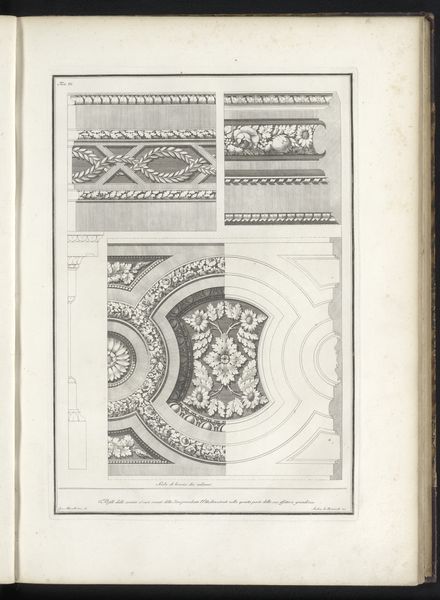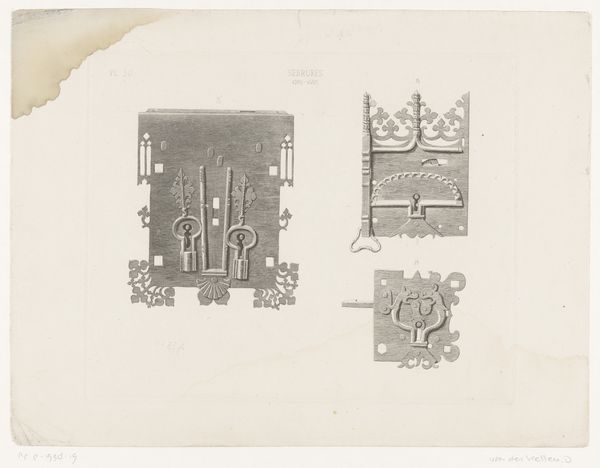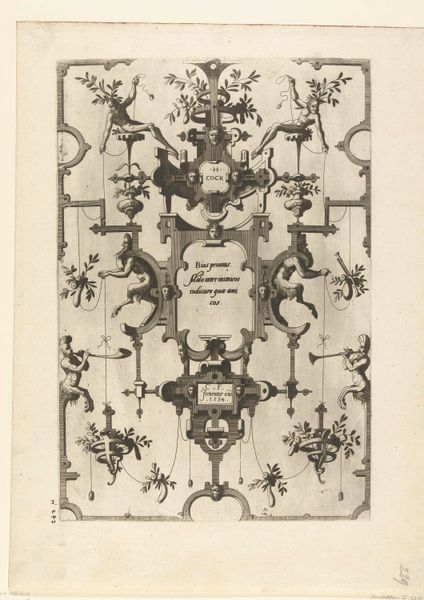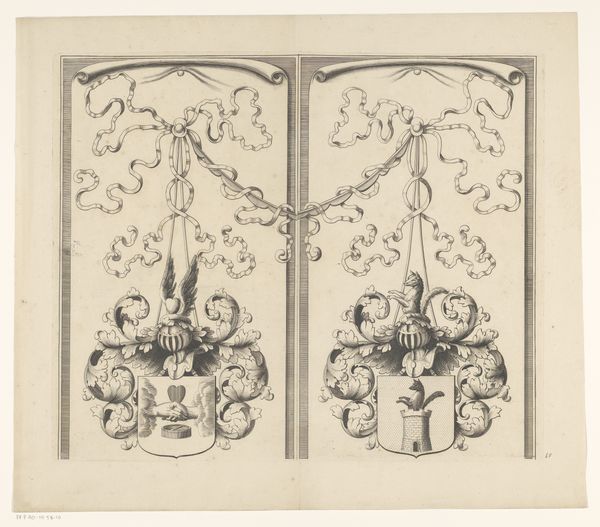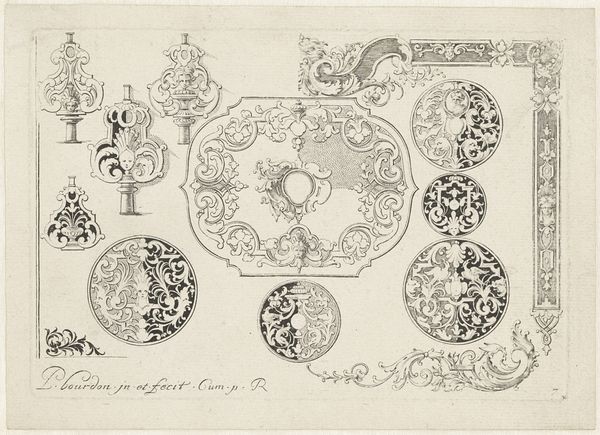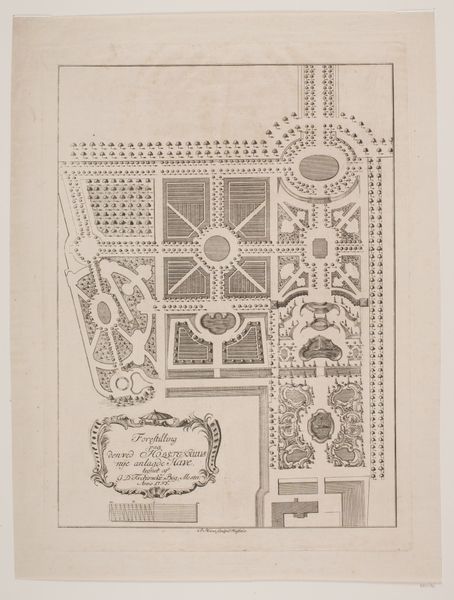
#
aged paper
#
ink paper printed
#
old engraving style
#
personal sketchbook
#
linocut print
#
pen-ink sketch
#
pen and pencil
#
pen work
#
sketchbook drawing
#
sketchbook art
Dimensions: height 418 mm, width 290 mm
Copyright: Rijks Museum: Open Domain
Curator: Let’s examine "Details van plafond," or "Ceiling Details," a sketch from a personal sketchbook by Charles Claesen dating roughly from 1866 to 1900. It's rendered in ink on paper in that wonderful old engraving style. Editor: It strikes me as incredibly precise. The linework is so delicate and considered; the various ornaments almost seem to float on the page. The contrast, or lack thereof, generates this very serene feeling. Curator: Consider the period—the late 19th century in Europe was rife with burgeoning industrialization. Details like this harken back to pre-industrial craftsmanship, serving as a form of cultural resistance against mass production. These designs, in their commitment to handcraftsmanship, underscore a desire to preserve artisanal traditions within a rapidly changing society. Editor: Absolutely, you can see that reverence for ornamentation in the elaborate details. I see repeated curvilinear forms; how does Claesen play with these forms to achieve this elaborate visual program? Curator: These motifs draw heavily from classical architectural forms, seen frequently throughout the city in affluent homes, but, furthermore, in buildings representing state power, perhaps referencing a need to evoke former times as proof of legitimacy in government at the time. The question becomes, how can this be implemented by a common artisan? Editor: And I notice that these designs aren't presented in isolation. They are composed on the page so that it can act as a tool. You get a real sense of modularity. Curator: The meticulous details could serve a didactic purpose. By documenting ornamentation with such exactness, Claesen preserves these details. They function as both documentation and design. Editor: Fascinating how seemingly static forms can become such active records when situated within a dynamic social context. It makes one rethink what we value in historical representation. Curator: Indeed. “Details van plafond” encapsulates how art operates beyond the visual; it’s deeply entrenched in societal values and transitions.
Comments
No comments
Be the first to comment and join the conversation on the ultimate creative platform.

